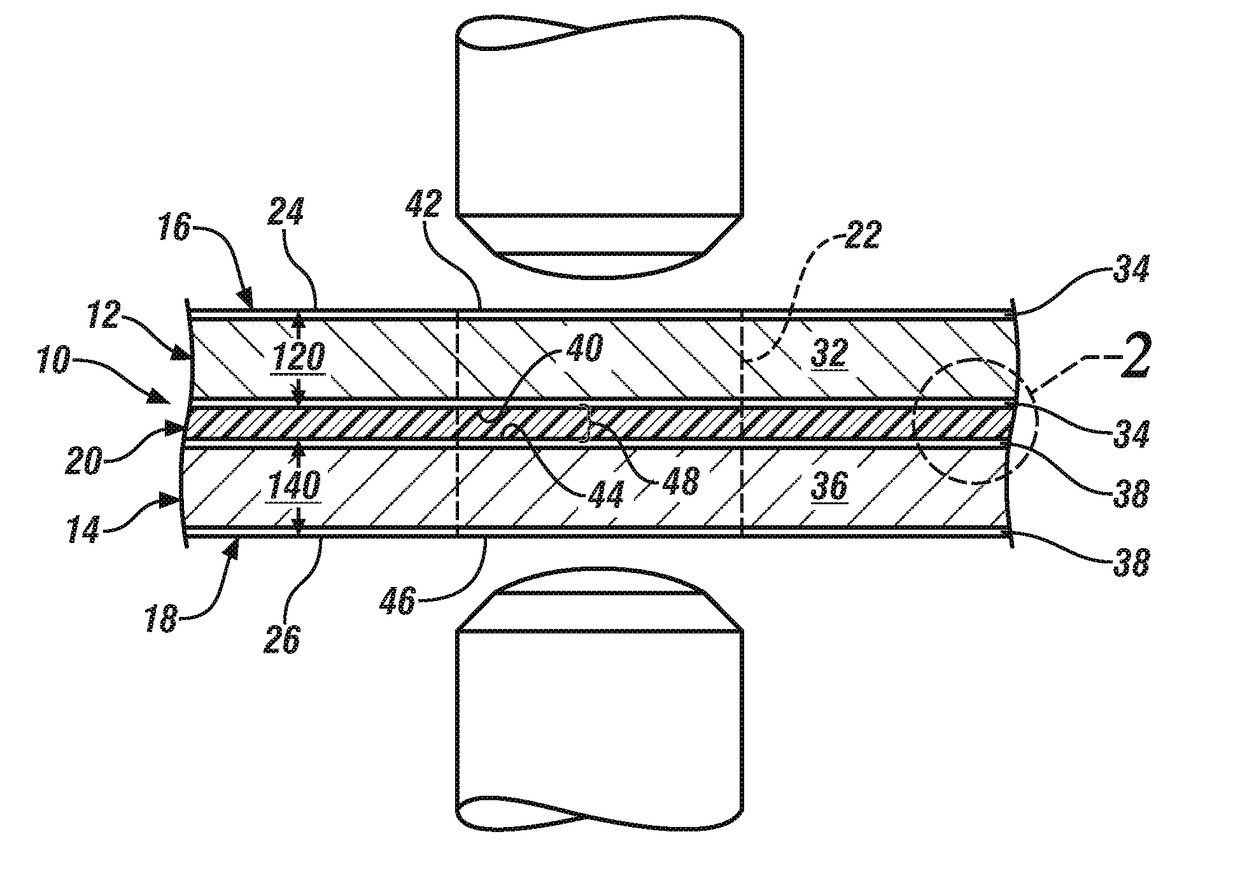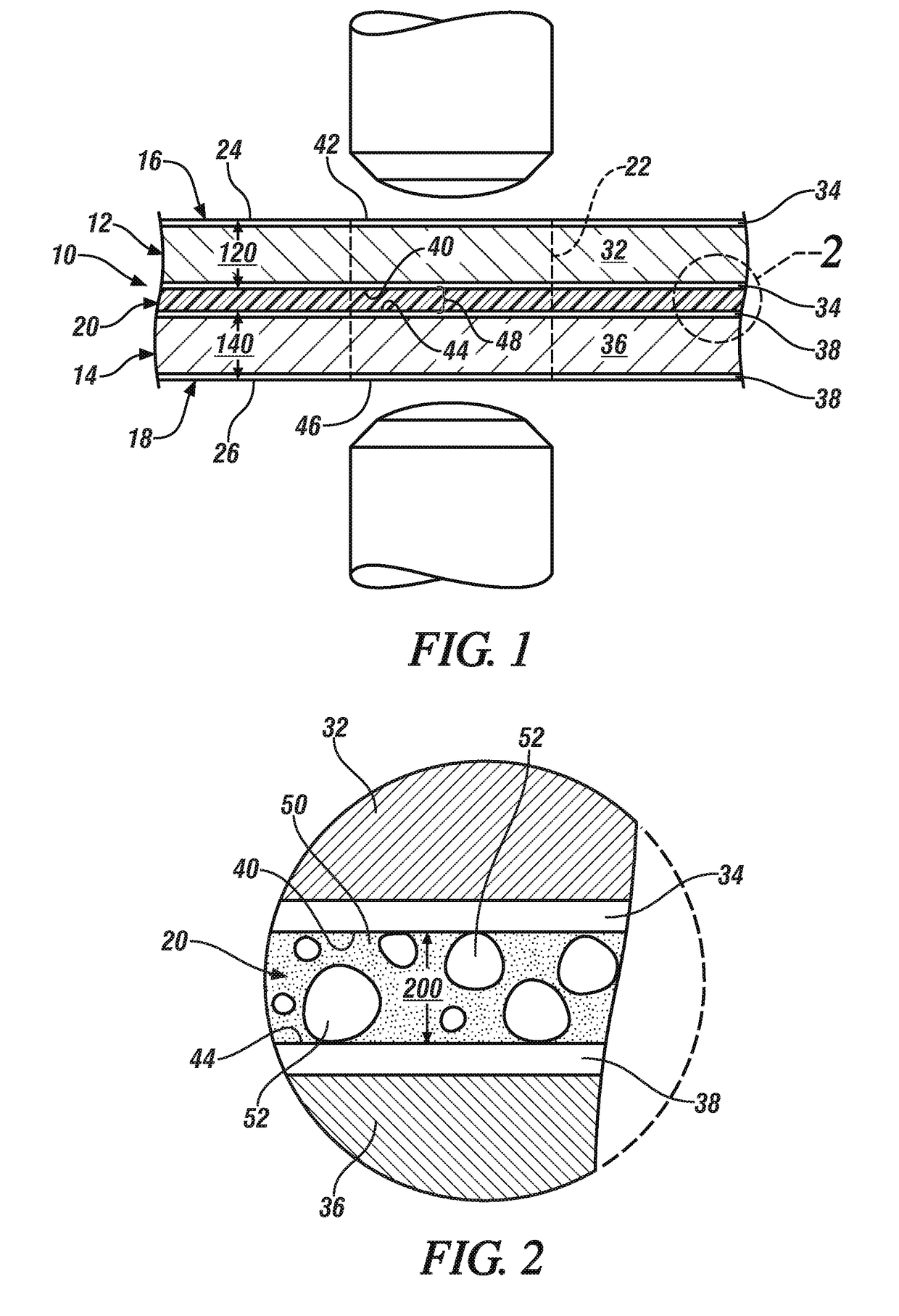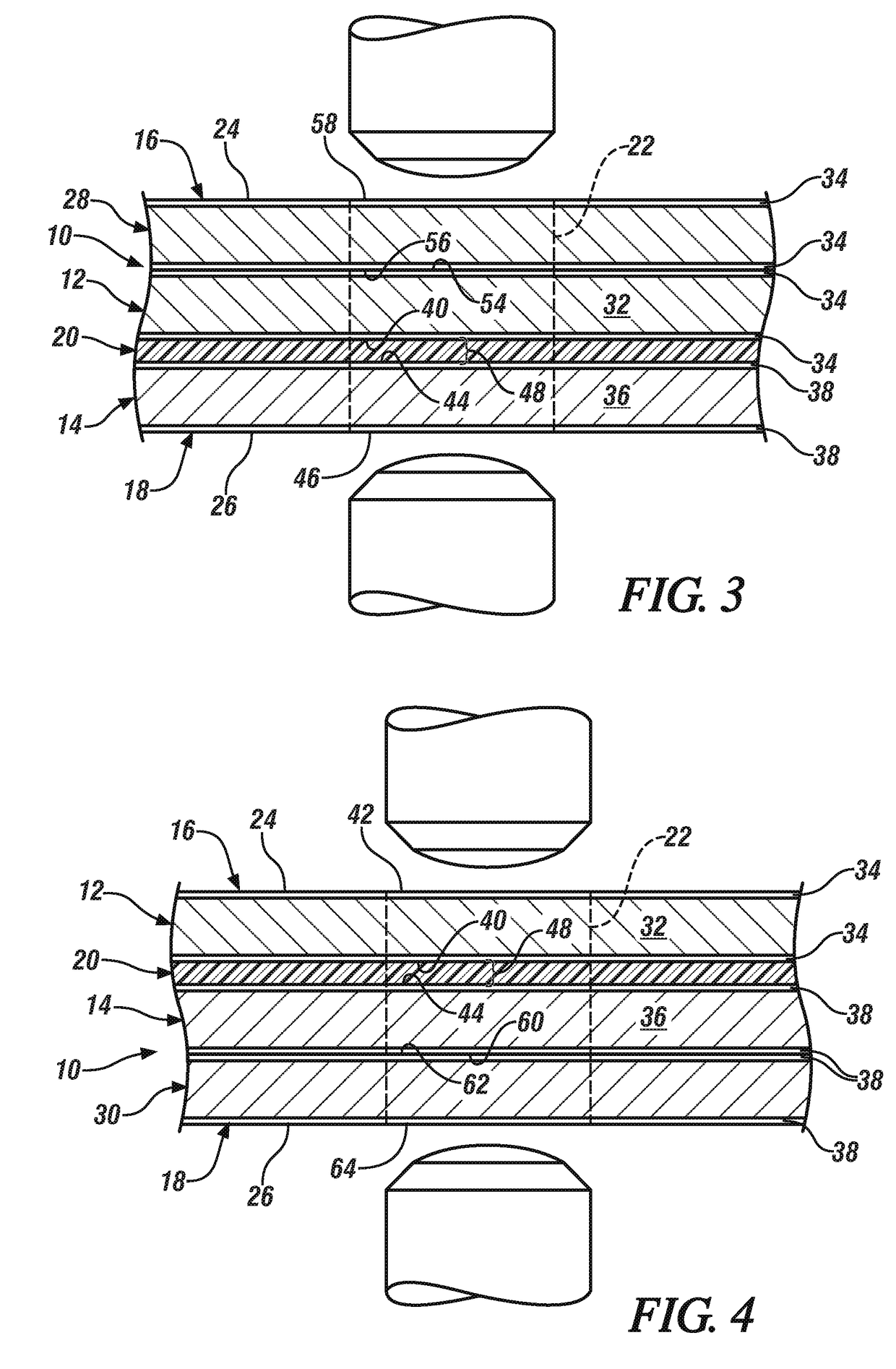Method of resistance spot welding aluminum to steel
a technology of resistance spot welding and aluminum workpiece, which is applied in the direction of welding apparatus, welding/soldering/cutting articles, manufacturing tools, etc., can solve the problems of difficult spot welding of aluminum workpiece to steel workpiece, near-interface defects in the growing weld pool, and difficult to effectively control and concentrate heat within the aluminum workpi
- Summary
- Abstract
- Description
- Claims
- Application Information
AI Technical Summary
Benefits of technology
Problems solved by technology
Method used
Image
Examples
Embodiment Construction
[0040]Spot welding an aluminum workpiece to a steel workpiece presents some notable challenges. As discussed above, many of the identified challenges that complicate the ability to spot weld those dissimilar metals relates to the susceptibility of the weld joint to being compromised at the interface of the joint and the faying surface of the steel workpiece due to weld disparities and the presence of a hard and brittle intermetallic layer. These challenges are particularly problematic when an intermediate organic material is present between the two workpieces at the faying interface due to the fact that, during welding, the organic material can interact with a residual oxide film to form a more mechanically tough composite residue film. As a result, the application of conventional steel-to-steel or aluminum-to-aluminum spot welding practices to a workpiece stack-up that includes a lapped configuration of aluminum and steel workpieces has a tendency to produce a weld joint between th...
PUM
| Property | Measurement | Unit |
|---|---|---|
| Thickness | aaaaa | aaaaa |
| Thickness | aaaaa | aaaaa |
Abstract
Description
Claims
Application Information
 Login to View More
Login to View More - R&D
- Intellectual Property
- Life Sciences
- Materials
- Tech Scout
- Unparalleled Data Quality
- Higher Quality Content
- 60% Fewer Hallucinations
Browse by: Latest US Patents, China's latest patents, Technical Efficacy Thesaurus, Application Domain, Technology Topic, Popular Technical Reports.
© 2025 PatSnap. All rights reserved.Legal|Privacy policy|Modern Slavery Act Transparency Statement|Sitemap|About US| Contact US: help@patsnap.com



